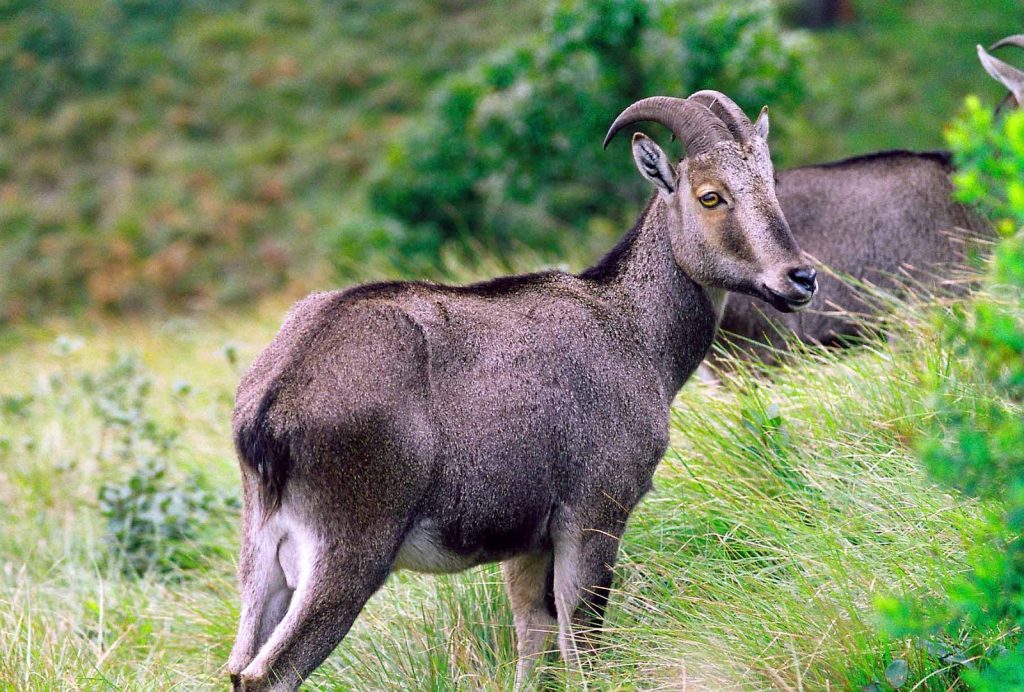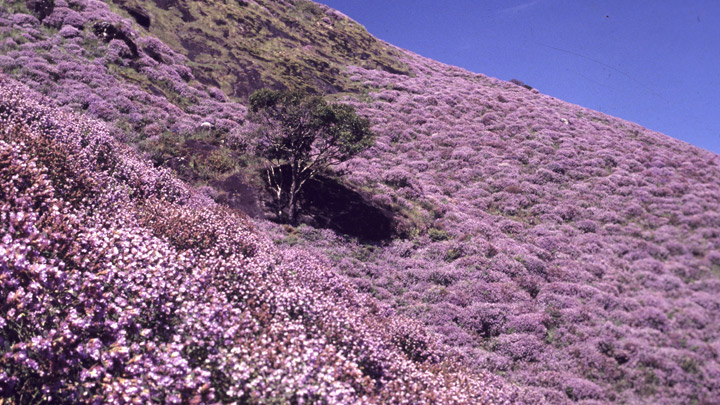
Nestled at a staggering elevation of 7,000 feet above sea level, Eravikulam National Park stands as a testament to nature’s resilience and the unwavering dedication of conservationists. In this introductory section, we embark on a journey to uncover the remarkable transformation of Eravikulam National Park, a sanctuary that has evolved from its early days as a hunting preserve into a treasured haven for biodiversity and a beacon of conservation success.
A Transformation of Significance
The story of Eravikulam is not just one of natural beauty and diverse wildlife; it is a story of transformation and triumph. Once a favored hunting ground during the British colonial era, where wildlife and natural resources were exploited with abandon, the park has undergone a profound metamorphosis. It now stands as a protected national park, preserving the very species that were once hunted within its borders.
As we delve into Eravikulam’s history, we will unravel the intriguing narrative of early conservation efforts, the declaration of the park as a National Park in 1978, and its pivotal role in safeguarding the Nilgiri Tahr, a highly endangered mountain goat species. Together, these elements form a tapestry that tells the story of a place where nature’s splendor meets conservation’s triumph.
II. Historical Background
Exploring Eravikulam’s Colonial Past
To truly appreciate Eravikulam National Park’s remarkable transformation into a conservation success story, we must first step back in time and explore its historical roots as a colonial hunting preserve.
A Playground for British Planters
During the British colonial era, the lush landscapes of Eravikulam served as an exclusive playground for British planters. They frequented the region for hunting expeditions, where the pursuit of wildlife was not merely a recreational activity but a means of exploitation for profit and amusement. The park’s pristine wilderness became a backdrop for the reckless pursuit of game animals and the extraction of valuable natural resources.
Exploitation of Wildlife and Natural Resources
The colonial hunters engaged in the unrestrained hunting of native wildlife, decimating populations of species such as the Nilgiri Tahr and altering the ecological balance of the region. Additionally, the forests were subjected to rampant exploitation, with timber and other resources harvested without regard for sustainability.
This period of unchecked exploitation left scars on the land and its inhabitants, highlighting the urgent need for conservation measures. Eravikulam’s transformation from a hunting preserve to a sanctuary and, ultimately, a national park reflects a significant shift in perspective—a transition from exploitation to preservation, from destruction to conservation.
In the following sections, we will delve into the early efforts to protect Eravikulam’s indigenous Nilgiri Tahr population and the subsequent establishment of the park as a sanctuary in 1975. These milestones mark the beginnings of Eravikulam National Park’s inspiring conservation journey.
III. Early Conservation Efforts Preserving the Indigenous Heritage: Nilgiri Tahr Protection

Eravikulam National Park’s transformation from a hunting ground to a sanctuary and later to a national park didn’t happen overnight. It was the result of early conservation efforts driven by a growing awareness of the need to protect the park’s indigenous Nilgiri Tahr population.
Guardians of the Nilgiri Tahr
The Nilgiri Tahr, an endangered mountain goat species, is one of the most iconic inhabitants of Eravikulam National Park. Recognized for its distinctive curved horns and robust build, the Nilgiri Tahr was once perilously close to extinction due to hunting and habitat destruction.
In response to these threats, the first steps towards conservation were taken. The protection of the Nilgiri Tahr became a focal point for early conservationists. Efforts were initiated to safeguard this magnificent creature, which had become synonymous with the region.
The Birth of a Sanctuary (1975)
The year 1975 marked a pivotal moment in Eravikulam’s conservation journey. Recognizing the urgent need to protect the Nilgiri Tahr and the unique ecosystem it inhabited, Eravikulam was declared a sanctuary. This designation brought with it legal protections and measures aimed at preserving both the wildlife and the natural environment.
As Eravikulam National Park transitioned into a sanctuary, it became a refuge for not only the Nilgiri Tahr but also numerous other plant and animal species that called this high-altitude haven home. This marked the beginning of a new era—an era of preservation, where the land that was once exploited would now be conserved for future generations to cherish.
In the subsequent section, we will explore the significant declaration of Eravikulam as a National Park in 1978, shedding light on the factors that led to this decision and the park’s broader ecological significance.
IV. Declaration as a National Park (1978)
From Sanctuary to Protected Haven: Recognizing Ecological Significance
In 1978, Eravikulam National Park achieved a milestone that would forever cement its status as a bastion of biodiversity conservation. It was during this year that the sanctuary was officially declared a National Park, a decision rooted in the recognition of its ecological, faunal, geomorphological, and zoological significance.
Reasons Behind the Declaration
The elevation of Eravikulam to the status of a National Park was not a mere bureaucratic formality. Rather, it was a deliberate and informed decision that acknowledged the park’s exceptional value in terms of ecological preservation. Several key factors contributed to this transformation:
Ecological Significance: Eravikulam National Park boasts a unique and fragile ecosystem, with a high-altitude plateau, rolling grasslands, and sholas (tropical montane forests). This complex landscape is home to a diverse range of plant and animal species, many of which are endemic to the Western Ghats.
Faunal Diversity: The park’s faunal diversity is striking, with a rich variety of wildlife species. Notably, it is the stronghold of the Nilgiri Tahr, with approximately half of the world’s population of these mountain goats residing within its boundaries. Beyond the Tahr, the park is home to numerous other mammals, birds, butterflies, and amphibians.
Geomorphological Significance: Eravikulam National Park is characterized by its undulating terrain, hillocks, and the presence of the Anamudi peak, the highest south of the Himalayas at 2,695 meters. The park’s geomorphology contributes to its unique microclimates and biodiversity.
Zoological Importance: The park’s biological richness extends to its diverse range of species, including several that are endemic to the Western Ghats. The presence of these endemic species underscores its zoological importance on a regional and global scale.
The decision to declare Eravikulam as a National Park was not just a change in nomenclature; it was a commitment to preserving the natural heritage of the Western Ghats and securing the future of the park’s unique ecosystems and inhabitants.
V. Role in Nilgiri Tahr Conservation
Eravikulam National Park has emerged as a critical guardian in the conservation of the Nilgiri Tahr, a highly endangered mountain goat species that has found its last stronghold within the park’s pristine confines.
The Nilgiri Tahr: A Precious Resident
The Nilgiri Tahr (Nilgiritragus hylocrius) is an iconic symbol of the Western Ghats, renowned for its distinctive appearance, including curved horns and a sturdy build. However, the story of this magnificent creature is one marked by peril. Once on the brink of extinction due to rampant hunting and habitat loss, the Nilgiri Tahr found its last sanctuary in Eravikulam National Park.
Conservation Efforts
Eravikulam National Park has dedicated itself to the conservation and protection of the Nilgiri Tahr. Here’s how the park has played a pivotal role:
Preservation of Natural Habitat: The park’s primary focus has been on preserving the natural habitat of the Nilgiri Tahr. By maintaining the delicate balance of grasslands and sholas, the park ensures that the Tahr has a secure environment for feeding, breeding, and shelter.
Population Monitoring: Rigorous population monitoring and research efforts have been conducted to gain insights into the Nilgiri Tahr’s behavior, distribution, and reproductive patterns. These data-driven initiatives have been instrumental in developing effective conservation strategies.
Awareness and Education: The park actively engages in educational programs to raise awareness about the Nilgiri Tahr and the importance of its conservation. These efforts extend to local communities, tourists, and schools, fostering a sense of responsibility and stewardship.
Statistics and Data
Eravikulam National Park is home to approximately half of the world’s Nilgiri Tahr population. This concentration of Tahr within the park underscores its pivotal role in the species’ conservation. The park’s conservation initiatives have resulted in a steady recovery of the Nilgiri Tahr population, offering hope for the long-term survival of this unique mountain goat.
The story of Eravikulam’s role in Nilgiri Tahr conservation serves as a testament to what focused efforts and dedicated conservation can achieve.
VI. Flora and Fauna Conservation
Preserving Biodiversity in Eravikulam’s Lush Haven

While the Nilgiri Tahr takes center stage as a symbol of conservation success in Eravikulam National Park, the park’s commitment to preserving biodiversity extends far beyond a single species. Its diverse ecosystems, ranging from rolling grasslands to lush shola forests, provide sanctuary to a multitude of plant and animal species.
Diverse Habitats
Eravikulam’s varied topography encompasses three major types of plant communities:
Grasslands: The primary part of the park is adorned with rolling grasslands, providing a picturesque landscape reminiscent of high-altitude meadows. These grasslands serve as crucial grazing grounds for the Nilgiri Tahr.
Shrublands: Scattered patches of shrublands dot the landscape, especially along the bases of cliffs and rocky slab areas. Here, unique plant species like Actinodaphne bourdilloni and Microtropis ramiflora thrive.
Forests: Deeper valleys within the park harbor extensive forests, known as sholas, characterized by tropical montane vegetation. These shola forests are home to a rich diversity of plant life, including Strobilanthus kunthiana, also known as Neela Kurinji, famous for its once-in-twelve-years blooming.
Notable Flora
Eravikulam National Park is a treasure trove of botanical diversity. Some of the important flora species that find refuge within the park’s boundaries include:
- Pittosporum tetraspermium
- Sysygium aronottianum
- Chrysopogon Zelanieus
- Eupatorium adenophorum
- Eulalia phaeothrix
- Tripogen bromodes
- Arundinella fuscata
- Cyanotis Species
The shola grasslands, in particular, stand out for their exceptional richness in balsams and orchids, including the long-thought-extinct Brachycorythis wightii.
Faunal Riches
Eravikulam National Park is a haven not only for plant life but also for a wide array of fauna. Among the 29 recorded species of mammals, five are endemic to the Western Ghats. Beyond the Nilgiri Tahr, residents and visitors may encounter species such as Gaur, Sloth Bear, Nilgiri Langur, Tiger, Leopard, Giant Squirrel, and wild dogs.
The park also boasts a vibrant avian population, with 140 species of birds, including ten that are unique to the Western Ghats. The presence of the Atlas moth, one of the largest moths in the world, adds to the park’s allure.
In addition to these, Eravikulam National Park is a habitat for more than 100 varieties of butterflies, 20 species of amphibians, and a diverse range of insects and invertebrates.
The park’s commitment to preserving this rich tapestry of life is a testament to its role not just as a conservation area but as a thriving ecosystem where each species plays a vital part in the delicate web of life.
VII. Unique Features and Natural Phenomena
Eravikulam National Park is not just a sanctuary for biodiversity; it’s a place of wonder, where unique features and natural phenomena captivate the imagination of all who visit. Among these wonders, the Neelakurinji flowering event stands out as a rare spectacle that underscores the park’s ecological significance.
A Botanical Rarity: The Neelakurinji Blossom

One of the most anticipated and celebrated events in Eravikulam National Park is the mass flowering of Neelakurinji (Strobilanthes kunthiana). This rare event occurs once every twelve years, transforming vast stretches of the park’s grasslands into a mesmerizing carpet of blue-purple blooms.
The Neelakurinji is an endemic shrub that boasts a stunning life cycle. It remains dormant for years, patiently waiting for its moment to shine. When the time is right, the entire landscape is blanketed in a sea of blue, creating a visual spectacle that draws nature enthusiasts, botanists, and tourists from across the globe.
Significance of Neelakurinji
Beyond its aesthetic appeal, the Neelakurinji holds ecological significance. Its blossoming en masse serves as a natural phenomenon that indicates the health and vibrancy of the park’s grasslands. The event also plays a crucial role in attracting attention to the conservation efforts within Eravikulam National Park.
But Neelakurinji is just one of the many unique features that make Eravikulam stand out. The park’s undulating terrain, lush shola forests, and the presence of the Anamudi peak, the highest south of the Himalayas, all contribute to its exceptional charm. These features are not just picturesque but also integral to the park’s conservation narrative.
Contribution to Conservation
Eravikulam’s unique features and natural phenomena play a vital role in drawing attention to the park’s conservation efforts. The Neelakurinji bloom, in particular, showcases the park’s ecological vitality and highlights the importance of preserving this delicate ecosystem.
VIII. Conservation Challenges and Initiatives
While Eravikulam National Park has achieved remarkable success in biodiversity conservation, it is not immune to the challenges that threaten ecosystems worldwide. Addressing these challenges is essential to secure the park’s future as a haven for wildlife and a sanctuary for nature enthusiasts.
Habitat Loss and Fragmentation
One of the primary challenges faced by Eravikulam National Park is habitat loss and fragmentation. As human populations expand and agriculture encroaches upon natural landscapes, the park’s boundaries face increasing pressure. The fragmentation of habitats can disrupt wildlife corridors, isolate populations, and limit the park’s capacity to support species diversity.
Climate Change
Climate change is another pressing concern. Rising temperatures, altered rainfall patterns, and shifting weather conditions can impact the delicate balance of ecosystems within the park. Species that are adapted to specific temperature and precipitation ranges may face challenges as these conditions shift.
Invasive Species
The introduction of invasive species poses a threat to the park’s native flora and fauna. These non-native species can outcompete indigenous plants and animals, disrupting the natural balance of the ecosystem. Vigilance and mitigation efforts are necessary to curb the spread of invasives.
Human-Wildlife Conflict
As human settlements encroach upon the park’s borders, incidents of human-wildlife conflict can arise. Elephants, in particular, make seasonal visits to the region, occasionally causing conflicts with local communities. Mitigation measures are crucial to ensure the safety of both wildlife and people.
Conservation Initiatives
Eravikulam National Park has not stood idly by in the face of these challenges. It has undertaken several conservation initiatives and partnered with organizations and local communities to address these issues:
Habitat Restoration: Efforts are underway to restore degraded habitats and reconnect fragmented landscapes within the park. This includes reforestation, invasive species management, and habitat corridors for wildlife.
Climate Adaptation: The park is actively researching and implementing strategies to help species adapt to changing climate conditions. This includes monitoring and protecting critical microclimates.
Community Engagement: Local communities are integral to the park’s success. Education and awareness programs, as well as community-based conservation initiatives, foster a sense of shared responsibility for the park’s well-being.
Research and Monitoring: Ongoing research and monitoring efforts provide valuable data to inform conservation strategies. This includes tracking changes in wildlife populations, habitat health, and climate impacts.
IX. Success Stories
The journey of Eravikulam National Park from a former hunting ground to a protected haven for biodiversity has been marked by significant milestones and conservation successes. These achievements underscore the park’s commitment to preserving its unique ecosystems and inhabitants. Let’s delve into some of the remarkable success stories that have emerged from Eravikulam’s conservation efforts.
- Nilgiri Tahr Population Recovery
Perhaps the most notable success story is the steady recovery of the Nilgiri Tahr population. Once on the brink of extinction due to hunting and habitat loss, the Tahr found refuge in Eravikulam National Park. Rigorous population monitoring and protection measures have resulted in a thriving population within the park’s boundaries. Eravikulam is now home to approximately half of the world’s Nilgiri Tahr population, a testament to its pivotal role in the species’ conservation.
- Neelakurinji Blossom Spectacle
The mass flowering of Neelakurinji, an event that occurs once every twelve years, has become a celebrated natural spectacle. Beyond its aesthetic beauty, the Neelakurinji bloom serves as a barometer of the park’s ecological health. The park’s commitment to preserving this phenomenon has drawn global attention and heightened awareness about the need for biodiversity conservation.
- Educational Outreach
Eravikulam National Park actively engages in educational outreach programs aimed at raising awareness about biodiversity conservation. These programs extend to local communities, schools, and tourists. By fostering a sense of responsibility and stewardship among visitors and residents, the park contributes to a collective commitment to protect its natural heritage.
- Research and Monitoring
Ongoing research and monitoring efforts within the park provide valuable insights into the behavior, distribution, and health of wildlife populations. This data-driven approach informs conservation strategies and ensures that interventions are based on sound scientific principles.
- Community Involvement
Local communities play a vital role in Eravikulam’s success. Through community-based conservation initiatives and partnerships, the park has built a network of stewards who actively participate in protecting the park’s ecosystems.
These success stories are not just individual achievements but part of a broader narrative of conservation excellence. Eravikulam National Park’s dedication to preserving its natural heritage serves as a beacon of hope and a model for biodiversity conservation efforts across the globe.
X. Visitor Experience and Ecotourism
Exploring Eravikulam’s Natural Splendors Responsibly
Eravikulam National Park isn’t just a sanctuary for wildlife; it’s also a destination that offers visitors a chance to immerse themselves in the wonders of nature. The park’s pristine landscapes, unique flora and fauna, and captivating natural phenomena make it a magnet for tourists and nature enthusiasts. However, the park’s commitment to conservation goes hand in hand with responsible tourism.
The Role of Responsible Tourism
Eravikulam National Park recognizes that responsible tourism can be a powerful ally in its conservation efforts. Responsible tourism entails:
- Sustainable Practices: Visitors are encouraged to follow sustainable practices that minimize their ecological footprint. This includes staying on designated paths, refraining from littering, and respecting the park’s rules and regulations.
- Education and Awareness: The park provides educational materials and conducts awareness programs to inform visitors about the park’s conservation goals and the importance of preserving its fragile ecosystems.
- Supporting Local Communities: Responsible tourism initiatives often involve partnerships with local communities. By supporting local businesses and communities, visitors contribute to the well-being of the region while fostering a sense of shared responsibility for the park’s conservation.
Visitor Experiences
Eravikulam National Park offers a range of visitor experiences that allow guests to connect with nature while minimizing their impact on the environment:
- Trekking Trails: The park features several trekking trails, including the Kurinji Trail, which offers opportunities to spot Nilgiri Tahr and witness the beauty of Neelakurinji blooms. These trails are carefully designed to ensure minimal disturbance to the park’s ecosystems.
- Lakkom Waterfalls: The Lakkom Waterfalls, originating in the heart of the park, provide breathtaking views and a chance to enjoy the serenity of nature. Visitors can also avail services from the eco shop cafeteria and refreshing center set up here.
- Cascade Walk: For those seeking a more immersive experience, the Cascade Walk takes you through the luxuriant shola forests and along the enchanting Lakkom Waterfalls. This one-hour trek is scheduled for mornings and evenings, providing a deeper connection with the park’s natural beauty.
- Jungle Camps: For a truly immersive experience, visitors can stay at the Lakkom Log House, located near the Lakkom Waterfalls. Here, the soothing sounds of waterfalls and the orchestra of birds provide a natural soundtrack, offering a unique blend of comfort and wilderness.
Eravikulam’s visitor experiences are carefully curated to ensure that guests not only enjoy the park’s natural splendors but also become ambassadors for its conservation.
Eravikulam National Park, once a hunting preserve, has transformed into a thriving haven for biodiversity, exemplifying the power of conservation. From its historical past to its declaration as a National Park in 1978, the park’s success stories, including the recovery of the Nilgiri Tahr population and the celebrated Neelakurinji blossom, shine as beacons of hope. While facing conservation challenges, Eravikulam remains committed to its natural heritage, with initiatives, sustainable tourism, and responsible visitor experiences at its core. It serves as a reminder that collective determination and shared responsibility can protect our planet’s irreplaceable ecosystems, inspiring and educating generations to come.



